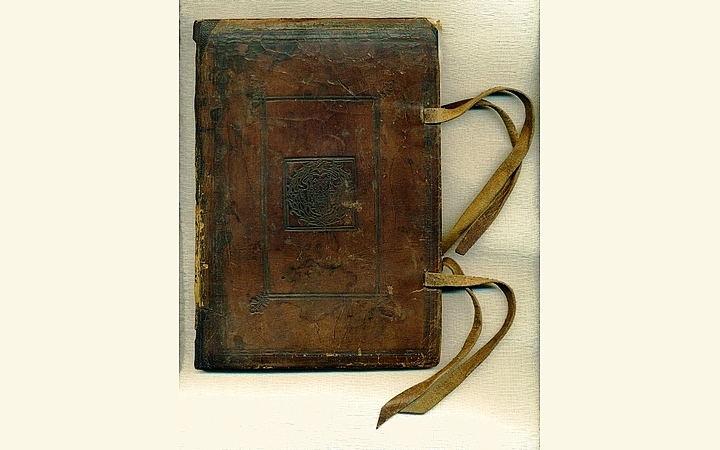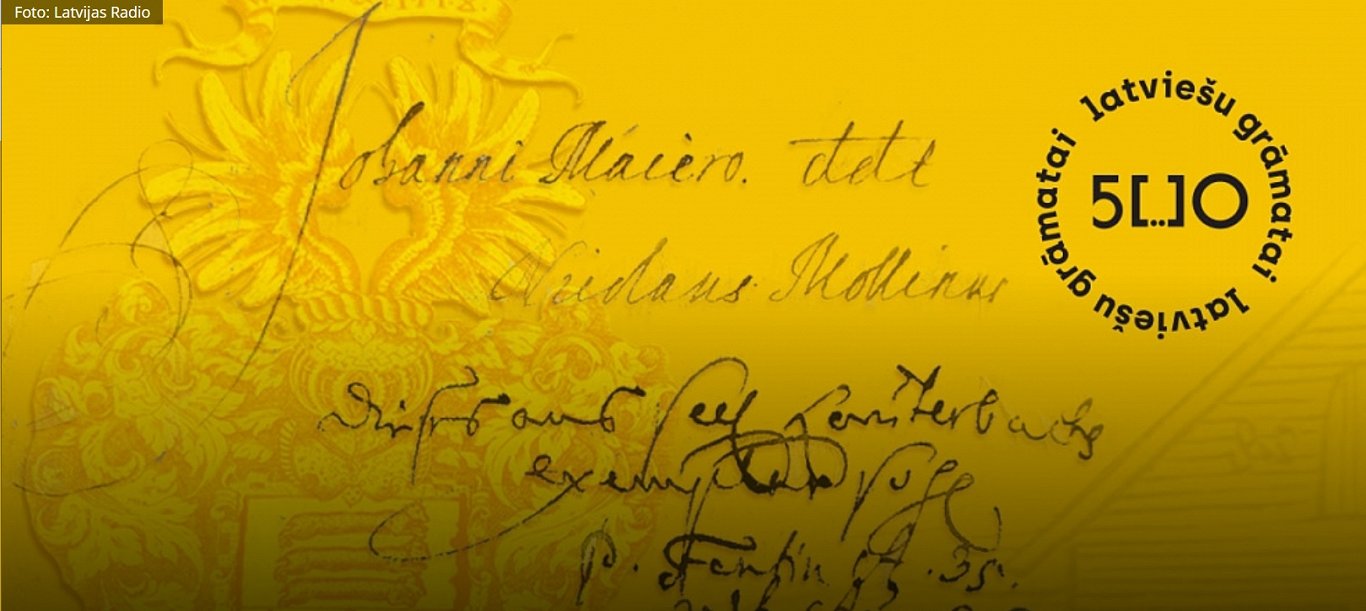More about the cycle of events can be discovered at the website https://www.gramatai500.lv and for more about the Latvian National Library and its constantly changing exhibitions and collections, visit: https://www.lnb.lv/.
Nikolaus Mollinus, the 'Gutenberg of Riga'
Book publishing and the establishment of the printing press are important milestones in the timeline of the intellectual history of a city and a nation. Book printing or "black art" is a precondition for social and intellectual change; its flourishing stimulates new paradigms of thought, significantly expands communication networks and an exchange of information. Book printing is a part of the media revolution that has profoundly influenced and transformed both the intellectual world and everyday life in Riga and throughout Livonia.
In his Table Talk (Tischreden, 1531–46), Martin Luther invited us to reflect on the divine nature of book printing: "Through it the Holy Scriptures are opened up and disseminated in all tongues and languages; it sustains all the arts and sciences, allows them to flourish and be handed down to our descendants. (...) Printing is the supreme and final gift by which God spreads the Gospel."
Speaking of the first book printer Johannes Gutenberg (1394–1468) and his printing house in Mainz around 1450, it is worth noting that the "Gutenberg of Riga" – the first printer in Riga, the Flemish publisher and bookseller Nicolaus Mollinus (Mollyn, Mollijns, c. 1550/1555–1625) started working in Riga about 140 years later. Mollinus came from the Mollinus family, printers and engravers from Antwerp. He arrived in Riga, then subject to the Polish Crown, in March 1588, most probably at the invitation of the Riga City Council. Consequently, the printing of books that Riga and its citizens required no longer had to be ordered from Wittemberg, Magdeburg, Rostock or even Paris, as had been the case earlier, at the beginning of the 16th century.
During Mollinus’ 37 years of publishing (1588–1625), the Riga printing house printed approximately 194 publications (books, calendars, single-page sheets, engravings), most of which have survived in only one copy.
Many of these publications are thought to have been lost over the centuries; however, there have been occasional discoveries of some of the works printed in Riga's first printing house. The printing repertoire also indirectly tells us the reason for his "coming" to Riga: it was a politically far-sighted call, a commission from Riga City Council.

The activity of a Protestant printer who was loyal to the city during the active Counter-Reformation was seen as a counterforce to the intervention of the Catholic-Jesuit ideology which was directed against heretics i.e. the Lutherans. The papal legate Antonius Possevinus (1533–1611) tried to implement this strategy of printing Catholic books in Livonia in the 1680s. A book printed in Riga became a source of information, a means of transmitting ideas in uncertain and changing conditions. The printing press had a mission: to act as a medium and, through the power of the written, printed and distributed word, to publicly proclaim the position of the legitimate authority of Riga – the City Council.
At the same time, in the search for a middle road, Mollinus’ printed works in various formats had to demonstrate to the widest possible audience the loyalty of the city and its administration to the ruling power, initially the Polish-Lithuanian Commonwealth, and later (from 1621) to Sweden, thus reducing the possibility of potential legal, economic sanctions or even military threats.
It is important to remember that the Riga printing house was operating at a time when the province of Livland was being ravaged by the Polish-Swedish war and Riga was defending itself against Swedish attacks. A book or a single-page sheet is available in many copies, and an image is also a powerful mediator between the customer, the author and his audience. With Mollinus, authors in Riga were able to publish their works in their own city, and the people of Riga were able to read them.
The following sacred and secular literature that the Rigans needed was printed: Church manuals, a wide variety of theological treatises, uplifting sermons, official documents (council orders), school books, political treatises, tributes to citizens of Riga on celebratory and mournful occasions, fiction (especially Neo-Latin poetry), engravings, also essays containing observations on natural science (for example, on comets, earthquakes, the origin of amber, unusual childbirth).
There is nothing to be found on the streets of Riga to remind us of the man who laid the foundations of Latvia's extensive book and printing industry.
His house near the Town Hall on Krāmu Street, which was the location of the first printing house, bookshop and bindery, has not been preserved. His burial place is unknown (like many others who died during the plague) and it will be impossible to sight his face in a portrait.
Mollin's legacy is preserved in the collections of our memory institutions. Consequently, the collection of the Academic Library of the University of Latvia, the successor of the Bibliotheca Rigensis, the oldest library in Latvia, contains the most complete range of Mollinus’ publications, including both single-page sheets, scrap paper fragments of old printed works and representative leather-bound books decorated with gilded coats of arms of Riga.
Whenever the importance of Riga's first printing house is discussed, it is worth noting how much the breadth and quality of research into Latvia's cultural and intellectual history depends on the range of Mollinus’ publications available to scholars.
The contribution and importance of Mollinus’ printing house to Latvian culture is characterised by a number of facts:
Mollinus printed texts in Latin, German (both Upper and Middle High German), Flemish, Swedish, Finnish and Latvian. Mollinus published the first book printed in Latvian in Riga (1615). Mollinus was the first to print sheet music in Riga (1592, 1615, 1618).
Mollinus was able to publish books in two-colour print (red and black). He not only used high-quality paper, but also printed on parchment. The first known bookbinders in Riga have ties with Mollinus’ printing house. The first, and for a long time the only bookshop in Riga was located next to Mollinus’ printing house on Krāmu Street. Mollinus’ printed images in woodcut, copperplate and etching techniques and thus established the beginnings of book engraving and printmaking as an artistic genre in Riga.
Heinrich Thum, the first copper engraver in Riga, started working with Mollinus in 1602. The panoramas of Riga (1589, 1625) and a plan of the surrounding area (1622), printed in Mollinus' printing house, were the first city views drawn in situ in Riga and published here. A unique large-scale copper engraving of the panorama of Riga in 1612 was commissioned by Mollinus and printed under his supervision, as were the first printed ex-libris of Riga (1602, 1605).



























